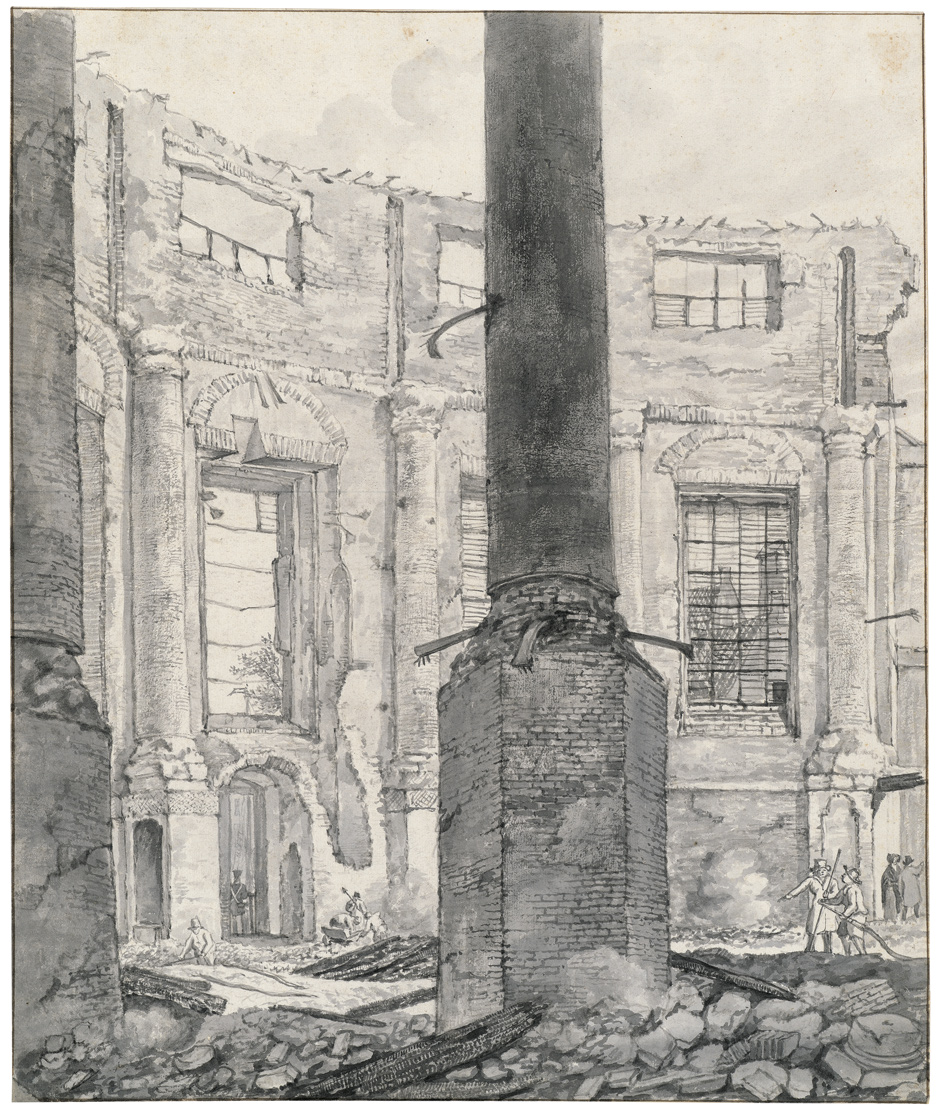Loading the page ...
Gerrit Lamberts
(1776–1850, Amsterdam)
The Remains of the Lutheran Church in Amsterdam after the Fire of 1822. Black chalk, grey wash, framing line in pen and brown ink. 42.3 x 35.2 cm. Verso inscribed in the artist’s own hand: “Afbeelding van de ruine der Luthersche Nieuwe Kerk te Amsterdam naar de orgeldeur te zien G. Lambert(s).”
In his early years the draughtsman and etcher, Gerrit Lamberts, was a bookseller and municipal official in Amsterdam. As a sideline he taught himself how to draw and paint watercolours. Around 1810 he was apprenticed to the Amsterdam draughtsman and watercolourist, Daniel Kerkhof (1766–1831), and decided to take up a career as an artist. After 1818 Lamberts regularly displayed drawings at exhibitions in Amsterdam and Haarlem. He kept up his artistic sideline even after his appointment as curator of the recently founded Rijksmuseum in 1824.
Lamberts’ drawn oeuvre consists primarily of detailed topographical views of Amsterdam which are of considerable documentary and cultural historical significance. Many of these works show Amsterdam from its then still rural side or focus on quiet, picturesque corners of the capital. Lamberts’ artistic view is not restricted to topographically accurate reproduction, however, being frequently distinguished by compositional originality and a subtle rendering of light and atmosphere. A good example is the present large sheet which is quite remarkable in artistic terms. It depicts the remains of the 17th century Lutheran Church on the Singel Canal in Amsterdam, which was almost completely razed to the ground in a fire on 18 September 1822. Lamberts was a diligent chronicler of everyday events in his native city. Whenever buildings burned down, collapsed or underwent demolition the artist was on the spot to document what was happening. Thus he made several drawings of the ruins of the Lutheran Church, which show the building from different angles. A number of these studies are now in Amsterdam’s Gemeentearchief (see De Verzameling van Eeghen. Amsterdamse tekeningen 1600–1950, edited by B. Bakker, E. Fleurbaay, A. W. Gerlagh, Zwolle 1988, p. 374, no. 417).
The present view of the interior of the burned-out church radiates a monumental grandeur. The artist has observed the cleaning-up work after the disaster from a low vantage point, which creates an impressive spatial effect. The powerful, smoke-blackened column rises up like a monument in the foreground and dominates the composition. The fluid, skilfully applied washes reproduce the different qualities of the damaged plaster, bricks, rubble and charred roof beams in a very realistic manner, giving them an almost tangible quality. The drawing is more than the accurate eye-witness account of a chronicler, however. Whether the artist so intended or not, the question of transience is readily apparent. The once mighty building has fallen victim to the destructive force of the elements and thus serves as a symbol of the nullity and fragility of human endeavour. From the collection of I. Q. van Regteren Altena (Lugt 4617).
